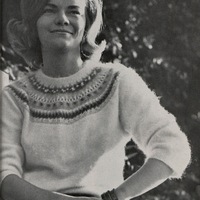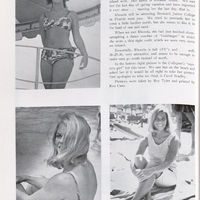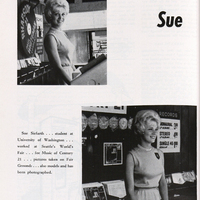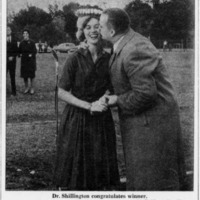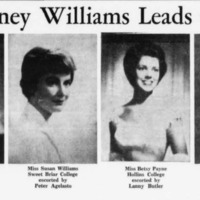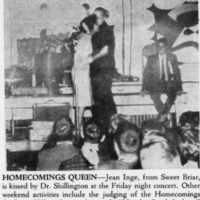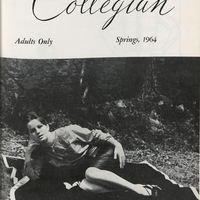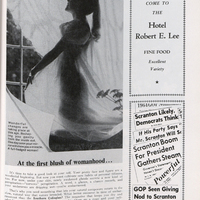The 1960s at Washington and Lee University, as portrayed in the Southern Collegian, Ring Tum Phi, and The Calyx, represent a pivotal era of contrasts and transitions. This decade, anchored in traditional values yet teetering on the edge of societal change, offered a complex portrayal of women, influenced by the broader media landscape of the time.
1960s
Decade of Dichotomy: The 1960s in the Southern Collegian
The Southern Collegian, during this period, featured women in roles that were emblematic of the era - often as symbols of beauty and grace, yet not without an undercurrent of objectification. This portrayal is consistent with the findings of Archana and Joshi in their study "Gender stereotyped portrayal of women in the media: Perception and impact on adolescent," which discusses how media often perpetuated stereotypical and limiting perceptions of women.
Similarly, Ring Tum Phi and The Calyx often featured glamour shots of homecoming queens and "out-of-town girls," aligning with the era's fascination with feminine aesthetics. These portrayals, while celebrating women's presence in university life, also underscored their roles as symbols of charm and physical beauty, a trend highlighted in Julia T. Wood's "Gendered Media: The influence of media on views of gender" which discusses how media representations often reinforce traditional roles and normalize objectification.
The "Adults Only" section from the Spring 1964 edition of the Southern Collegian exemplifies this complex interplay of maturity, sophistication, and exclusivity, where femininity is both showcased and scrutinized. This nuanced portrayal suggests a society grappling with the evolving roles of women, a theme explored in Leslie Miller-Bernal and Susan L. Poulson's "Going coed: women's experiences in formerly men's colleges and universities 1950-2000," which discusses the shift in women's roles in higher education environments.
The 1960s also witnessed advertisements and articles in these publications that continued to reinforce traditional gender roles and stereotypes. This trend is in line with the broader societal norms of the time, where women's roles were often seen as ornamental and supportive, as analyzed in the various studies cited in our sources.
In creating this exhibit section, we delve into how Washington and Lee University's culture intersected with broader societal views on women during this transformative era. The Southern Collegian, Ring Tum Phi, and The Calyx not only serve as historical archives but also as mediums for understanding the interplay between university culture and the evolving perceptions of women's roles in society.
The narrative of the 1960s, as depicted through these university publications, is one of intricate beauty and complexity, reflecting a university at the threshold of change. It invites exploration of how these portrayals contributed to the tapestry of Washington and Lee University's history, setting the stage for the transformative years that followed. This examination of the 1960s through the university's official publications provides a vital perspective on the evolution of women's portrayals at Washington and Lee University, offering a foundation for understanding the subsequent changes in the following decades.
